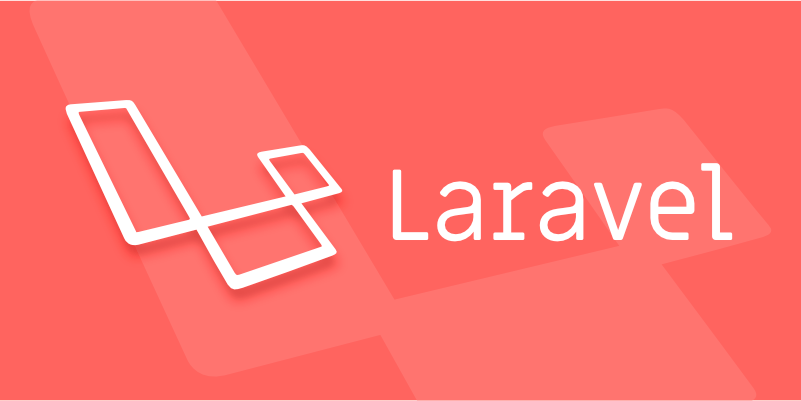To set up subdomain routing in Laravel, use route groups with the domain parameter. 1. Define subdomain routes using Route::domain('subdomain.example.com') and wrap related routes in a group. 2. Optionally, use route parameters like {tenant}.example.com to dynamically capture subdomain names. 3. Configure your local or production server (Valet, Homestead, Nginx, or Apache) to resolve subdomains to your Laravel app. 4. Test the setup by visiting various subdomains and clear route cache in production using php artisan route:clear.

Setting up subdomain routing in Laravel is actually pretty straightforward once you understand how Laravel’s routing system works with domains. The key is to use route groups with the domain parameter, which allows you to define different routes based on the subdomain.

Let’s break it down into steps that you can follow directly in your Laravel project.
Define Subdomain Routes Using Route Groups
Laravel allows you to define routes that respond to specific subdomains using the domain option in a route group. This is usually done in your routes/web.php or a separate route file if you're organizing things more granularly.

Here’s a basic example:
Route::domain('admin.your-app.test')->group(function () {
Route::get('/', function () {
return 'Welcome to the admin subdomain!';
});
});In this case, visiting admin.your-app.test will trigger that closure. Make sure to replace your-app.test with your actual domain.

If you're working locally, you may need to update your Homestead.yaml or Valet configuration to allow multiple subdomains to resolve properly.
Use Route Parameters in Subdomains (Optional)
You can also capture parts of the subdomain as parameters, which is useful if you're building a multi-tenant app.
Route::domain('{tenant}.your-app.test')->group(function () {
Route::get('/', function ($tenant) {
return "You are on the {$tenant} subdomain!";
});
});This way, visiting client1.your-app.test will pass client1 as the $tenant variable.
Just be careful with this setup — if you're not using it for a multi-tenant system, it might be overkill and could cause confusion or unintended route matches.
Configure Your Web Server to Handle Subdomains
Setting up the routes in Laravel is only half the battle. You also need to make sure your local or production server is configured to accept requests for subdomains.
-
Local development (Valet): Run
valet parkin your project directory and then any subdomain likeadmin.your-app.testwill work automatically. -
Local development (Homestead / Vagrant): You’ll need to configure the domain in
Homestead.yamland map it to your local project. -
Production (Nginx / Apache): You’ll need to set up a wildcard subdomain (
*.yourdomain.com) in your server config so that all subdomains point to your Laravel app.
Without proper server setup, Laravel won’t even get the chance to process the subdomain routing.
Test Your Setup
Once everything is configured, make sure to test a few scenarios:
- Access the subdomain directly in the browser
- Try with and without
www(if applicable) - If using dynamic subdomains, test with different names to ensure the parameter is captured correctly
Also, remember that Laravel caches routes in production. After making changes, run php artisan route:clear to make sure your new subdomain routes are picked up.
That’s basically it. Subdomain routing in Laravel isn’t complicated, but it does require a bit of coordination between your Laravel code and your web server setup. Get both right, and you’ll have a solid foundation for handling subdomains cleanly.
The above is the detailed content of How to set up subdomain routing in Laravel?. For more information, please follow other related articles on the PHP Chinese website!

Hot AI Tools

Undress AI Tool
Undress images for free

Undresser.AI Undress
AI-powered app for creating realistic nude photos

AI Clothes Remover
Online AI tool for removing clothes from photos.

Clothoff.io
AI clothes remover

Video Face Swap
Swap faces in any video effortlessly with our completely free AI face swap tool!

Hot Article

Hot Tools

Notepad++7.3.1
Easy-to-use and free code editor

SublimeText3 Chinese version
Chinese version, very easy to use

Zend Studio 13.0.1
Powerful PHP integrated development environment

Dreamweaver CS6
Visual web development tools

SublimeText3 Mac version
God-level code editing software (SublimeText3)
 Working with pivot tables in Laravel Many-to-Many relationships
Jul 07, 2025 am 01:06 AM
Working with pivot tables in Laravel Many-to-Many relationships
Jul 07, 2025 am 01:06 AM
ToworkeffectivelywithpivottablesinLaravel,firstaccesspivotdatausingwithPivot()orwithTimestamps(),thenupdateentrieswithupdateExistingPivot(),managerelationshipsviadetach()andsync(),andusecustompivotmodelswhenneeded.1.UsewithPivot()toincludespecificcol
 Sending different types of notifications with Laravel
Jul 06, 2025 am 12:52 AM
Sending different types of notifications with Laravel
Jul 06, 2025 am 12:52 AM
Laravelprovidesacleanandflexiblewaytosendnotificationsviamultiplechannelslikeemail,SMS,in-appalerts,andpushnotifications.Youdefinenotificationchannelsinthevia()methodofanotificationclass,andimplementspecificmethodsliketoMail(),toDatabase(),ortoVonage
 Understanding Dependency Injection in Laravel?
Jul 05, 2025 am 02:01 AM
Understanding Dependency Injection in Laravel?
Jul 05, 2025 am 02:01 AM
Dependency injection automatically handles class dependencies through service containers in Laravel without manual new objects. Its core is constructor injection and method injection, such as automatically passing in the Request instance in the controller. Laravel parses dependencies through type prompts and recursively creates the required objects. The binding interface and implementation can be used by the service provider to use the bind method, or singleton to bind a singleton. When using it, you need to ensure type prompts, avoid constructor complications, use context bindings with caution, and understand automatic parsing rules. Mastering these can improve code flexibility and maintenance.
 Strategies for optimizing Laravel application performance
Jul 09, 2025 am 03:00 AM
Strategies for optimizing Laravel application performance
Jul 09, 2025 am 03:00 AM
Laravel performance optimization can improve application efficiency through four core directions. 1. Use the cache mechanism to reduce duplicate queries, store infrequently changing data through Cache::remember() and other methods to reduce database access frequency; 2. Optimize database from the model to query statements, avoid N 1 queries, specifying field queries, adding indexes, paging processing and reading and writing separation, and reduce bottlenecks; 3. Use time-consuming operations such as email sending and file exporting to queue asynchronous processing, use Supervisor to manage workers and set up retry mechanisms; 4. Use middleware and service providers reasonably to avoid complex logic and unnecessary initialization code, and delay loading of services to improve startup efficiency.
 Managing database state for testing in Laravel
Jul 13, 2025 am 03:08 AM
Managing database state for testing in Laravel
Jul 13, 2025 am 03:08 AM
Methods to manage database state in Laravel tests include using RefreshDatabase, selective seeding of data, careful use of transactions, and manual cleaning if necessary. 1. Use RefreshDatabasetrait to automatically migrate the database structure to ensure that each test is based on a clean database; 2. Use specific seeds to fill the necessary data and generate dynamic data in combination with the model factory; 3. Use DatabaseTransactionstrait to roll back the test changes, but pay attention to its limitations; 4. Manually truncate the table or reseed the database when it cannot be automatically cleaned. These methods are flexibly selected according to the type of test and environment to ensure the reliability and efficiency of the test.
 Choosing between Laravel Sanctum and Passport for API authentication
Jul 14, 2025 am 02:35 AM
Choosing between Laravel Sanctum and Passport for API authentication
Jul 14, 2025 am 02:35 AM
LaravelSanctum is suitable for simple, lightweight API certifications such as SPA or mobile applications, while Passport is suitable for scenarios where full OAuth2 functionality is required. 1. Sanctum provides token-based authentication, suitable for first-party clients; 2. Passport supports complex processes such as authorization codes and client credentials, suitable for third-party developers to access; 3. Sanctum installation and configuration are simpler and maintenance costs are low; 4. Passport functions are comprehensive but configuration is complex, suitable for platforms that require fine permission control. When selecting, you should determine whether the OAuth2 feature is required based on the project requirements.
 Implementing Database Transactions in Laravel?
Jul 08, 2025 am 01:02 AM
Implementing Database Transactions in Laravel?
Jul 08, 2025 am 01:02 AM
Laravel simplifies database transaction processing with built-in support. 1. Use the DB::transaction() method to automatically commit or rollback operations to ensure data integrity; 2. Support nested transactions and implement them through savepoints, but it is usually recommended to use a single transaction wrapper to avoid complexity; 3. Provide manual control methods such as beginTransaction(), commit() and rollBack(), suitable for scenarios that require more flexible processing; 4. Best practices include keeping transactions short, only using them when necessary, testing failures, and recording rollback information. Rationally choosing transaction management methods can help improve application reliability and performance.
 Handling HTTP Requests and Responses in Laravel.
Jul 16, 2025 am 03:21 AM
Handling HTTP Requests and Responses in Laravel.
Jul 16, 2025 am 03:21 AM
The core of handling HTTP requests and responses in Laravel is to master the acquisition of request data, response return and file upload. 1. When receiving request data, you can inject the Request instance through type prompts and use input() or magic methods to obtain fields, and combine validate() or form request classes for verification; 2. Return response supports strings, views, JSON, responses with status codes and headers and redirect operations; 3. When processing file uploads, you need to use the file() method and store() to store files. Before uploading, you should verify the file type and size, and the storage path can be saved to the database.






